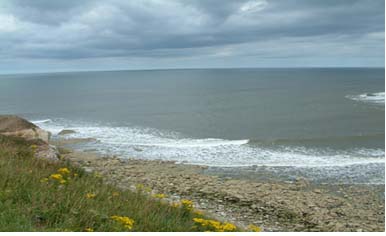 |
|
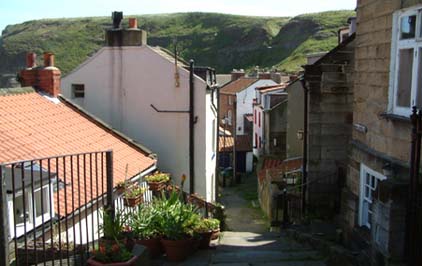 |
| Staithes |
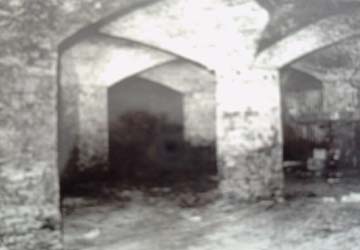 |
| Old Cellars |
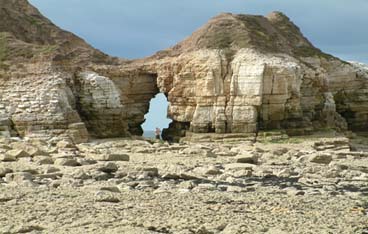 |
| Flamborough |
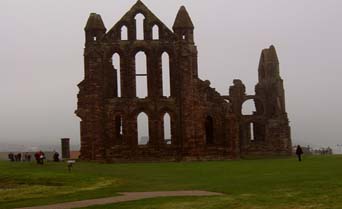 |
| Whitby Abbey |
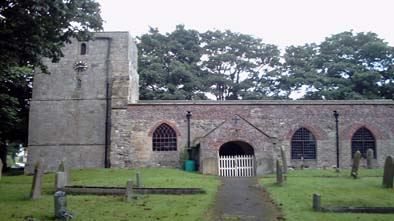 |
| St Cuthbert's Burton Fleming |
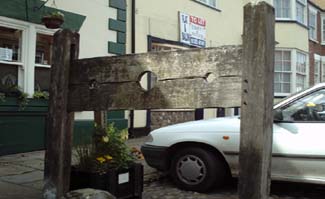 |
| Market Square Old Town Bridlington |
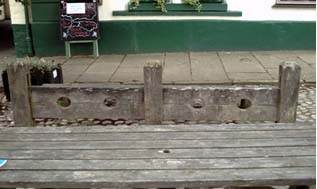 |
| Market Square Old Town Bridlington |
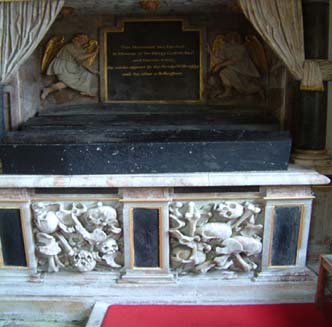 |
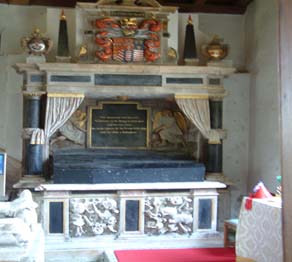 |
| Tomb of the 'Dark Knight' Sir Walter Griffith |
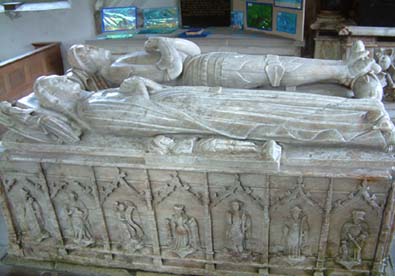 |
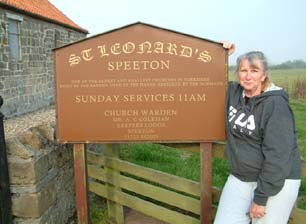 |
| The church of St. Cuthbert is an ancient
edifice, originally erected in the Early English period,
but subsequently restored and partially rebuilt of brick.
It consists of chancel, nave, south porch, and western
tower containing two bells. There was formerly a south
aisle, but this has been taken down, and the arcade
which separated it from the nave filled up with masonry.
The original chancel arch is gone, but the piers remain,
as also do the columns of the Early English doorway,
with capitals once richly carved. The church was repaired
in 1887, at a cost of £75, and at the same time
a small turret clock, with two dials, was placed in
the tower in commemoration of Her Majesty's jubilee.
The organ was presented by the vicar and his family
in 1883. The font is ancient, and consists of a circular
bowl and shaft, resting on a base bearing sculptured
heads, now scarcely recognisable. The windows, Gothic
on one side and square wooden framed ones on the other,
are filled with plain glass. The interior is furnished
with old-fashioned pews for 150 worshippers. This church
was formerly a chapel to the mother church of Hunmanby,
but became parochial before the Reformation. |
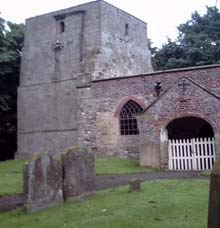 |
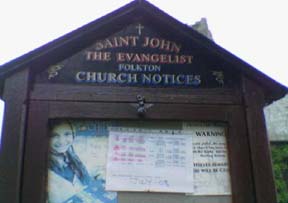 |
| St John the Evangelist Folkton |
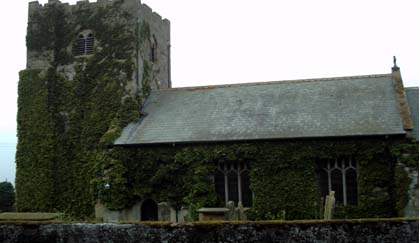 |
Rudstone Church and Monolith
The present church is a Norman building, but the
stone has been dated as being up to 3600 years old.
It is suggested that the early Anglo-Saxon missionaries
christianised an already sacred object. |
 |
| The Rudston area has many signs of prehistoric
life; there are square and round barrows which show
evidence of Neolithic and Bronze Age burials. The main
street of the village is an ancient track, probably
first used in Neolithic times. To the North of the village
are Argam Dikes, prehistoric earth banks. There are
also the strange “Cursus”, believed to be
late Neolithic Earth banks, which may have been track
ways or procession paths. Rudston must have been of
great importance as a religious or perhaps trading site
in prehistoric times. |
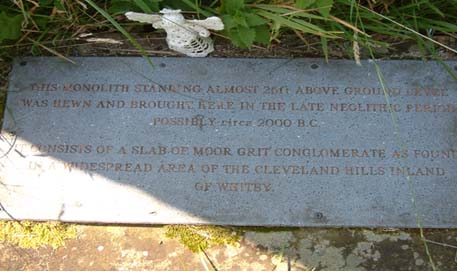 |
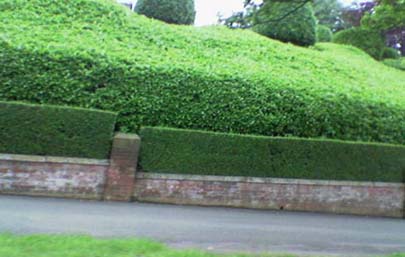 |
| How do they cut this hedge? It has got to be fifteen feet high |
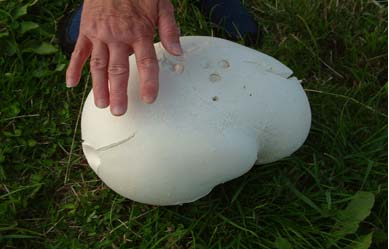 |
| Is this the bigggest mushroom in the world? |
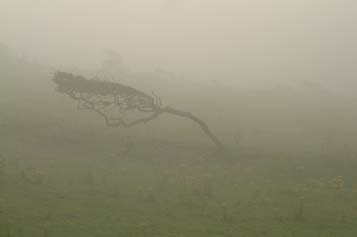 |
| Spooky misty Speeton |
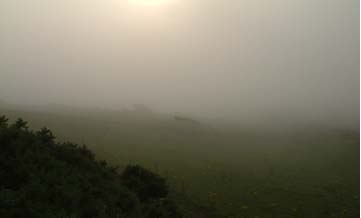 |
| Spooky misty Speeton |
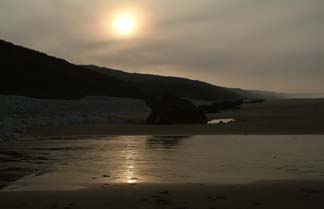 |
| Sunset at Speeton |
St Leonard's Church Speeton
A tiny Norman Chapel built on the site of an earlier
Saxon church. |
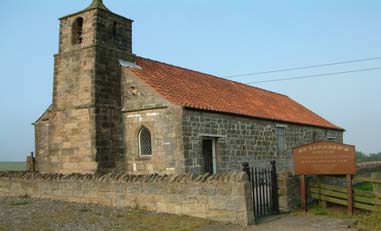 |
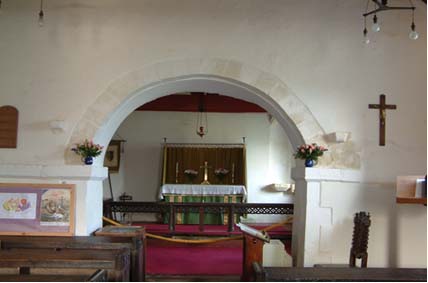 |
| St Leonard's |
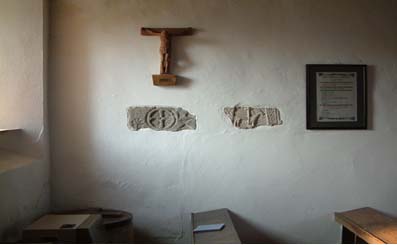 |
| St Leonard's |
We are at present recruiting new team members email to
register your interest.
Please note that we cannot take members of the public on
private residence investigations at any time to conform
with privacy and data protection standards. |
|
|
|
|
|
HUNMANBY
Old animal compound (Pinfold) for stray animals.
The man who collected these animals was called a
'Pindar'. The owners of the animals had to pay a
fine before they got them back. This particular
Pinfold was built next to thelock up in 1834 to
replace an older one that was originally sited in
another part of the village.This combined Pound
and Prison is believed to be the only one of its
kind in the country.
|
Village Lock Up. In constant use
until the 1890's when the new police station and courtroom
was built. The lock up was used occasionally in the
early 1900's |
|
Filey Museum
Was originally two single storey
cottages with a thatched roof dating back to 1696
(the oldest domestic building in Filey).
|
|
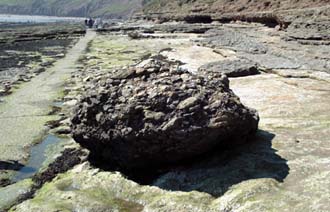
|
Filey Brigg
Filey Brigg is a promontory, jutting out 1600 metres
into the sea. At low tide, this rocky point is a
haven for fishermen, naturalists and fossil hunters.
The Wishing Stone
You are not supposed to pass this stone without
taking a pebble from it. Walk round it three times
and make a wish.
|
St Oswald's Church Filey
A cruciform church, dedicated to St Oswald, the
patron saint of Northumbrian (or North of the Humber)
fishermen, stands just above the ravine north of
the town.
It is believed that there was an earlier church
on the site , or in the field just over the northern
boundary wall. The present church was built over
a 50-year period in a style predominantly Early
English with late Norman elements. The earliest
work is dated c1180 and the latest c1230.
|
|
|
Monument in St Oswald's grave yard |
Old School House Pickering |
|
|
Pickering Castle
Pickering Castle is an 11th century earthwork motte
and bailey fortress, founded by William the Conqueror.
In the late 12th century, King Henry II founded
the stone castle, when crowning the motte with a
shell keep and encasing the inner bailey with a
curtain wall, flanked by the Coleman Tower. The
restored chantry chapel of 1227 and the foundations
of the early to mid 12th century Old Hall, also
stand in the inner bailey. In 1324-26 King Edward
II replaced the timber palisade which encased the
outer bailey with a curtain wall. The wall is flanked
by a gatehouse and three rectangular towers, one
having a small postern gate at its base, with its
own drawbridge to cross the outer ditch.
|
Garderobe Pickering Castle |
|
|
North Yorkshire Moors Railway Pickering |
Pickering Station NYMR |
|
|
Steam Train at Scarborough |
Vickers Pattern 13 Pounder Gun Scarborough |
|
|
History |
Bridlington Priory
Bridlington Priory was established in 1113AD and
became one of England’s leading monasteries.
The surviving nave of the church is now a thriving
parish church, a centre of worship and outreach.
|
|
|
Bridlington Priory |
THE ORIGINS OF BRIDLINGTON
Archaeological evidence proves people have been
living in the area for more than 3,000 years. Flint
arrowheads have been excavated and the skeleton
of a woman, bearing the traces of a bronze armlet
dating from 2,000 years ago, were found in the town
centre. From earliest times the area was an important
focus.
Chariot burials, tumuli and entrenchments
on the nearby Yorkshire Wolds indicate important
prehistoric occupation.
A Roman urn has been found and traces of Roman roads
have also been uncovered in the town.
In 1933 a farmer’s plough turned
up a number of Roman tiles near Rudston, a few miles
from Bridlington.
They were from three mosaic pavements,
the largest of which, at 20ft by 16ft, features
a figure of Venus leaving her bath and holding an
apple won from her admirer Paris. In the water is
a merman holding a back-scratcher. There are also
figures of a leopard, wounded lion, stag and bull
and the surrounds consist of huntsmen - one with
a spear, another holding a net and another is the
image of Mercury with his winged staff.
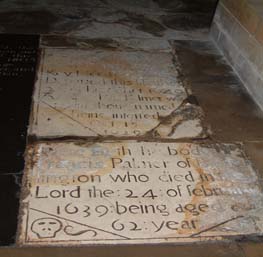
|
2
When the Romans left the area the
native Brigantes were attacked by Picts and Scots.
They sought the aid of the Saxons but before long
the friends became foes.
Many Angles then settled in the area.
At the village of Sewerby an important Anglian cemetery
marks the landing of King Ida in 557AD
After the Angles came the seafaring Vikings and
the evidence of place-names shows the significance
of their influence.
Some settled at Flamborough, a few miles along the
coast from Bridlington, where many of the present
residents are direct descendants of the Vikings.
So strong was the Viking influence that Flamborough
was often known as Little Denmark.
On the eve of the Norman invasion in 1066 Domesday
Book records show the land at Bridlington was held
by three Anglo-Scandinavians – Morcar, Torchil
and Carle.
The most powerful, Morcar, Earl of Northumberland,
rebelled against King William in 1068 but was unsuccessful
and his lands were forfeited, including the manor
of Bridlington.
William’s harrying of the North a year later
no doubt ravaged the area but in later centuries
it was to develop as an agricultural and marketing
community.
About 1113 the Norman baron Walter de Gant, who
by then held the manor of Bridlington, established
the first Augustinian priory in the North of England.
The parish church of St Mary, now known as Bridlington
Priory, is all that remains of what was, in the
late Middle Ages, the largest and richest Augustinian
monastery in the North of England.
When the monastery was dissolved and destroyed in
1537 by order of Henry VIII, its nave, always used
as a parish church, was allowed to stand.
The development of the two settlements of Bridlington
– the Old Town and Quay – was remarkable
and significant; the former growing around the Priory
and High Street, the latter focussed on the harbour. |
3
The two towns remained largely separated until
the 19th Century when the railway and its station
came in between them and began to pull them together.
St John of Bridlington (1320-79) was one of the
last English saints to be canonised, in 1401. After
his death many came to worship, including Henry
IV and Henry V. At the Priory a window commemorates
some of these important visitors.
For years the Quay remained a small place. In 1672
it had only 120 houses while the Old Town had 232
houses.
As the Quay developed as a resort, with the town’s
two beaches and harbour, it grew in importance and
size.
The Old Town is still surrounded in history.
Market Place has cobbled paving and stocks outside
one of the public houses.
The Crown leased the manor of Bridlington to local
townspeople in 1566. By 1630, it was decided to
sell it. In 1636 the Great Town Deed was drawn up
between 13 feoffees (purchasers), and 187 tenants
of the manor.
Many premises in the town are still owned by the
Lords Feoffees, as they became known, and the body
invests proceeds in town causes.
The current Bayle Museum, the former gatehouse to
Bridlington Priory, is owned by the Lords Feoffees,
which has been a charitable trust for more than
300 years.
Queen Henrietta Maria, wife of Charles I, famously
took refuge in Bridlington during the Civil War the
king was fighting against the Parliamentarians.
|
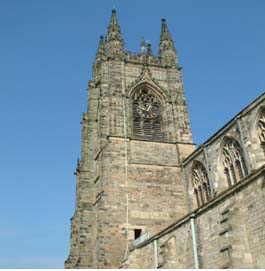
On a voyage back from Holland to obtain
supplies, she landed in Burlington Bay in February
1642. Two days later five ships of war commanded
by Parliamentarian Admiral Batten entered the bay
at night and opened fire with their cannons.
In a letter to the king, the Queen
wrote: “One of their ships did me the favour
of flanking on the house where I slept and before
I was out of bed the balls whished so loud about
me that my company pressed me earnestly to go out
of the house.
“So, clothed as well as in haste
I could be, I went on foot to some little distance
from the town of Burlington and got in the shelter
of a ditch, whither before I could get, the cannon
balls fell thick about us, and a servant was killed
within seventy paces of me.
“One dangerous ball grazed the
edge of the ditch and covered us with earth and
stones.”
|
|
The Bayle Museum
The word Bayle is derived
from the French Baille meaning ‘enclosure’
or ‘ward’.
Recent archaeological
surveys of the Bayle have concluded that a large proportion
of the building dates to the late 12th Century. The
initial use of the building is unclear although there
is a possibility it may have been a gatehouse to a
castle built by William le Gros after he took control
of Bridlington Priory in 1143.
In the 14th Century the
Bayle was the Gatehouse to Bridlington Priory, a porter
lived inside the Bayle and monitored the comings and
goings of the Priory. An Almoner also lived in the
Bayle and distributed food and ale to the poor of
Bridlington.
Since the dissolution
of Bridlington Priory the Bayle has been used for
many different purposes including a Prison, Court,
School, Garrison, Non – Conformist meeting place,
Town Hall and meeting room for the Lords Feoffees.
Today the Bayle is a
Grade I listed Building and scheduled Ancient Monument,
which makes it of great interest historically and
architecturally.
|
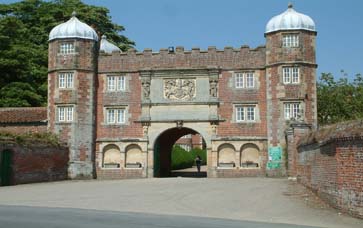
|
Burton Agnes Hall
Burton Agnes Hall is a Lovely Elizabethan House
filled with treasures collected by the family over
a period of 400 years and a history going back to
Norman times
|
Burton Agnes Hall House
Burton Agnes Manor House is a 12th century stone
fortified hall house, founded by Roger de Stuteville.
The original vaulted chamber, now supports a 15th
century great hall, built for Sir Walter Griffith.
It is the only surviving part of a much larger defensible
complex and is a rare example of a Norman house.
During the 17th and 18th century, the house was
encased in brick and used as a laundry for Burton
Agnes Hall.
|
|
|
St Martin's Burton Agnes
St Martin’s Church is basically a Norman building
over 800 years old. Its access is under an avenue
of beautiful yew trees. It is believed to be the
second church to stand on this site and has been
altered greatly over the years. There a many curious
features within the church and one of a number of
monuments is one in memory of Robert Wilberforce,
son of the reformer William Wilberforce, who at
one time was a rector in the village
|
Robin Hood's Bay
This former smugglers' den owes its reputation
to its strategic position sitting below a steep
cliff lapped by the sea. It was ideal for such nefarious
activities. And its rabbit warren of narrow tumbled
streets and alleyways made it ideal for escaping
the law.
er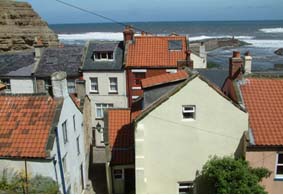
Legend has it that secret tunnels and passageways
once existed between the houses. Phaps they still
do.
|
|
|
Staithes
Was home to Captain Cook. It's quaint narrow streets
give the feeling of going back in time.
|
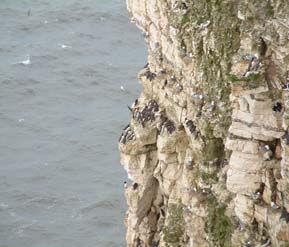 |
Bempton Cliffs Sea Bird Sanctuary |
| Scarborough incoming tide |
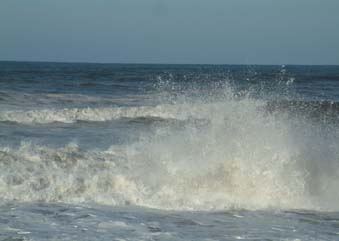 |
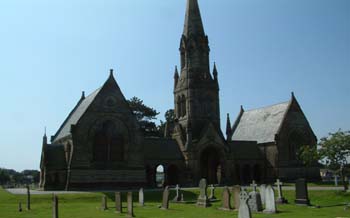 |
Old Bridlington Anglican cemetery |
|




.jpg)
.jpg)
